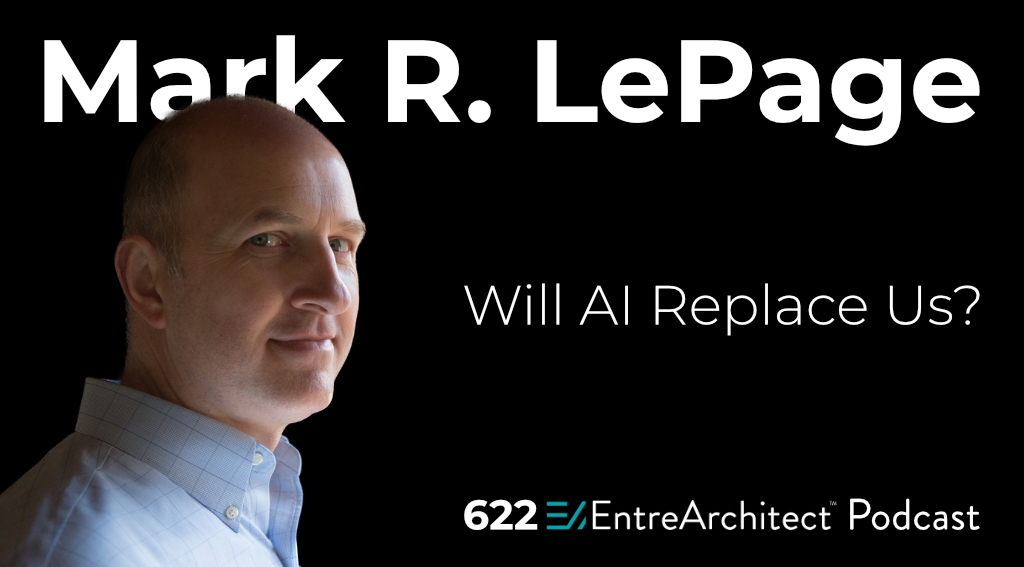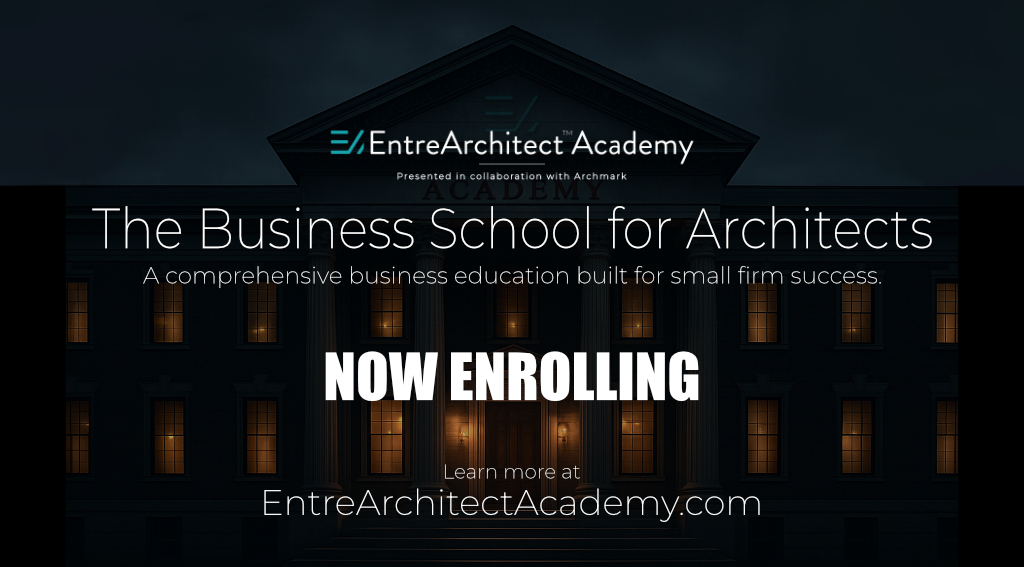
As automation takes over tasks, the architects who thrive will be those who build trust.
There’s a question simmering under the surface of our profession: Will AI replace architects?
If you’ve seen the latest AI-powered renderings, zoning analyses, or drafting tools, you know the question is not unreasonable. Machines can already complete in minutes what used to take us hours, sometimes days. The tasks we built our profession around are being commoditized.
This reality can feel threatening. But I believe it’s also liberating—if we’re willing to shift our perspective.
Because while AI may automate the tasks, it will never automate trust. And in the future of architecture, trust is where the value lives.
Why “Trust Over Task” Matters Now
Gary Vaynerchuk recently said, “The future belongs to those who focus on trust over task.” He was speaking to accountants, but his words landed like a lightning bolt for me as an architect.
Think about it: our profession has trained us to value precision, efficiency, and production. Yet those very skills are the easiest for AI to replicate. The more we tie our value to drafting, detailing, and documenting, the more replaceable we become.
But if we redefine our value around trust—around being a guide who helps clients navigate uncertainty—we become irreplaceable. AI can’t build relationships. AI can’t sit with a nervous couple who just bought their dream property and say, “I’ve got you.” AI can’t help a business owner clarify their vision when the options feel overwhelming.
Technology will keep advancing, but the architects who lean into their humanity will thrive.
Architects as Irreplaceable Guides
The future role of architects is not “task master” but “trusted guide.”
A guide doesn’t just hand over a map. A guide interprets, listens, and walks alongside. The client is the hero of their own journey. The architect is the steady presence saying, “I know the terrain. I’ve been here before. Let me help you make the best decision.”
That kind of relationship cannot be replicated by any machine. And it is exactly what clients crave in a world that feels increasingly automated and impersonal.
Five Ways to Out-Human the Machines
In my solo session, I shared five practical ways architects can begin shifting from tasks to trust. Let’s revisit them with the AI question in mind.
1. Lead with Empathy
AI can crunch numbers. It cannot care. Clients don’t just want efficient documents—they want to feel understood.
- Begin every project by uncovering the emotional drivers: Why this project? Why now? Why here?
- Listen not only for facts but for fears. Address those directly.
- Frame your design solutions in terms of how they fulfill client hopes, not just requirements.
2. Communicate Like a Human
AI can spit out technical jargon. Clients don’t need more complexity—they need clarity.
- Translate architecture into everyday language.
- Use visuals and analogies to make your ideas relatable.
- Help your clients feel smart, not confused.
3. Be Transparent and Real
AI can’t admit when it doesn’t know. You can. And that honesty builds trust.
- Share your process openly so clients know what to expect.
- Admit mistakes quickly and show how you’ll fix them.
- Speak the truth, even when it’s uncomfortable.
4. Personalize Every Interaction
AI is great at generic responses. But only you can make someone feel seen.
- Reference details your clients have shared about their lives.
- Tailor your presentations to their style and values.
- Always use their name and connect the design back to their story.
5. Show Up When It’s Not About the Work
AI disappears once the task is done. Humans show up when it matters most.
- Follow up after a project just to check in.
- Celebrate milestones in your clients’ lives.
- Send a thoughtful note that says, “I’m thinking of you.”
These gestures turn transactions into relationships—and that’s where architects become irreplaceable.
Why AI Won’t Replace Architects
Here’s the truth: AI will not replace architects. But architects who only sell tasks will be replaced.
The ones who thrive will be those who embrace the one thing machines cannot replicate: being human. Empathizing. Listening. Guiding. Supporting.
In a world of endless technology, the most human will win.
Building a Human-Centered Practice
If you want to future-proof your practice, here are a few ideas you can implement right away:
- Reframe your proposals. Emphasize how you guide decision-making, not just what drawings you produce.
- Invest in soft skills. Train yourself and your team in communication, listening, and emotional intelligence.
- Share stories in your marketing. Don’t just showcase projects—tell the story of the people behind them.
- Redefine success metrics. Track referrals, repeat clients, and satisfaction levels as key indicators of trust.
Final Thoughts
The robots are not coming to take your job. They’re coming to take your tasks. And that’s a good thing—because it frees you to do what only a human can do: connect, guide, and lead.
The future of architecture doesn’t belong to the fastest drafter or the most efficient modeler. It belongs to the architects who build trust, who lean into their humanity, and who never underestimate the power of connection.
If this resonates, listen to the full Solo Session at entrearchitect.com/622.
And if you want to surround yourself with architects who are already building trust-based, human-centered, profitable practices, join us inside the EntreArchitect Network. Together we can embrace the future—not by outpacing the machines, but by out-humaning them.

Spot on. There is so much baked into all of this. An entire career. A business. This could serve for a starting point for a very successful endeavor.
Mark, really good thoughts. As I said on your linkedin post, we will become editors of what AI can do, but your thoughts emphasize the human factors that AI cannot replicate – at least in the short term. Thanks for putting this out in the EntreArchitect-o-sphere!
Thanks for commenting. This is a critical time for architects. I hope the profession is paying attention.